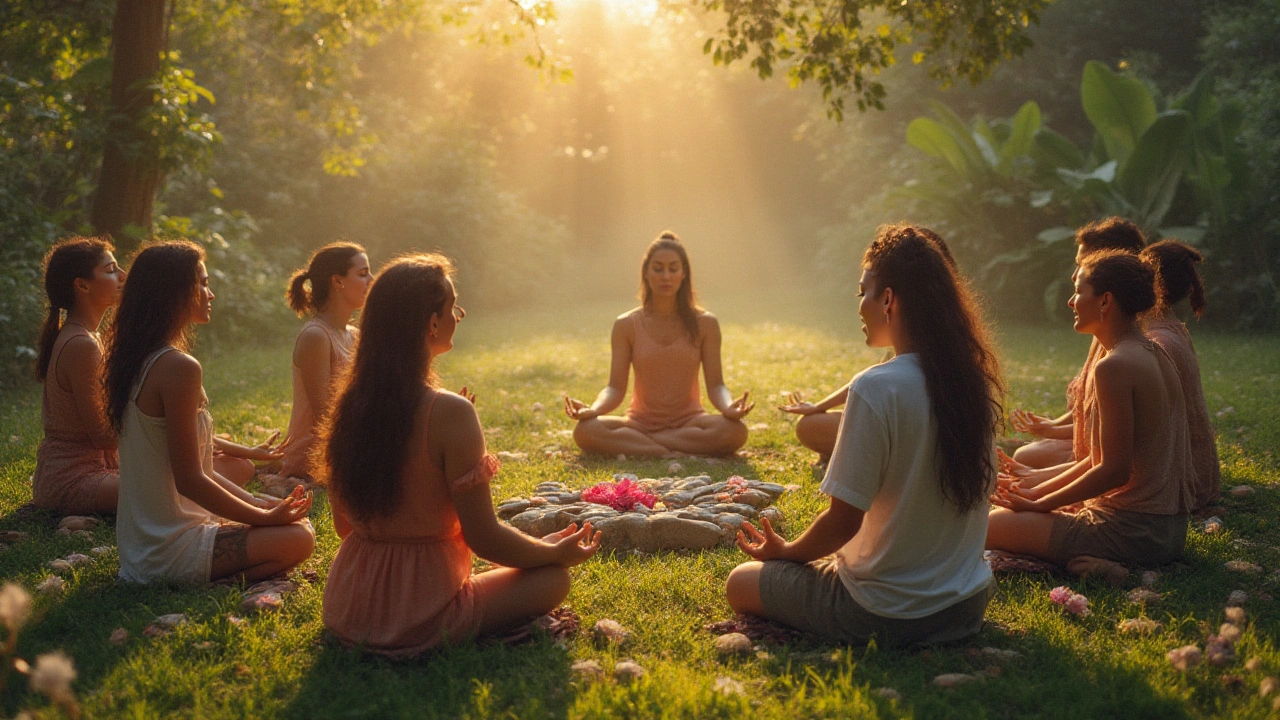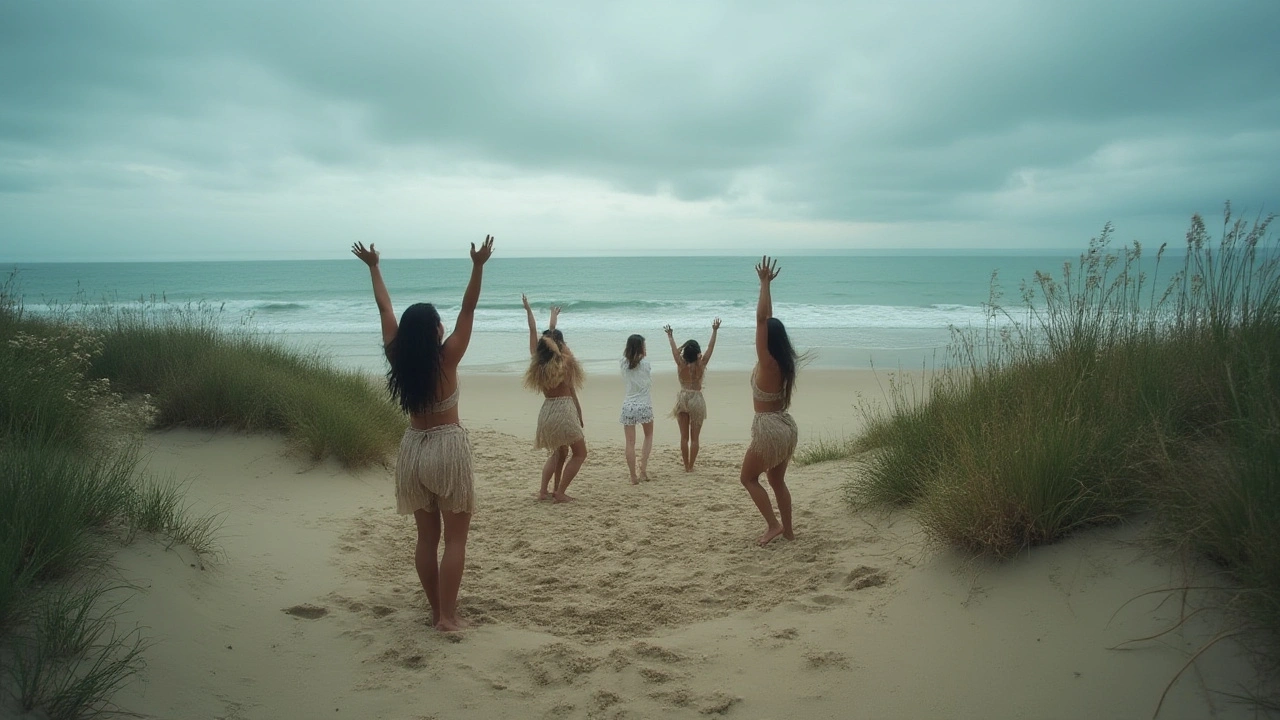How to Unleash Your Inner Kahuna: Mastering Hawaiian Healing and Wisdom
 Jul, 29 2025
Jul, 29 2025
If you think being a kahuna means just mastering some obscure island ritual, you’ve missed the real treasure. Kahuna is a way of living—grounded in Hawaiian tradition but surprisingly relevant for today’s searchers, healers, and anyone just craving more meaning. This isn’t about becoming someone else. It’s about dusting off those powerful instincts you already have and letting them run free. Imagine tapping into ancient secrets that’ve survived tsunamis, colonial invasions, and cosmopolitan makeovers—yet still make your brain buzz on a random Tuesday. Being a kahuna isn’t about robes or conch shells. It’s about connecting to nature, listening to your gut, and helping others in ways that stick. Ready to see how it works? Let’s get into the real stuff.
The Heart of Kahuna Wisdom: History, Meaning, and Modern Vibes
The word “kahuna” goes deep into Hawaiian culture and means “keeper of secrets” or “expert.” In old Hawaiʻi, kahunas weren’t just healers. They were the original multitaskers: priests, navigators, herbalists, even storytellers. Most Hawaiians respected kahunas for knowing things—ancestral medicine, how stars guide canoes, ways to talk to the land and the sea. It wasn’t something you picked up in a weekend workshop. Generations trained together, with skills passed down like rare shells and only earned after intense practice.
Here’s the cool thing: modern Hawaiians still use “kahuna” for true masters—surfing kahunas, car-engine kahunas, even tech kahunas. But people love to use it for healing, and it’s snagged attention worldwide. Lomi lomi massage, herbal remedies, and the legendary ho’oponopono conflict resolution—all rooted in these traditions. The core idea? Nothing exists alone: body, mind, heart, environment, and even ancestors are joined up like the islands in a chain.
The science crowd has started catching up, too. A study published in the Hawaiian Journal of Medicine & Public Health found lomi lomi massage (a classic kahuna practice) reduces heart rate and lowers stress hormones. Even conflict resolution through ho’oponopono shows measurable drops in workplace tension, and employers from California to Australia have paid for staff to learn it. Kahunas always knew what science is starting to prove: healing isn’t about slapping a bandage on your knee. It’s about tuning up your entire life, from the food in your kitchen to the people you talk to daily.
Fast-forward to today—busy people, tech overload, constant FOMO. Hawaiian wisdom reminds you that you’re not separate from the world. You’re literally walking on the same earth as your ancestors, eating the foods they loved, breathing familiar air. It’s not just spiritual poetry; it’s how communities survived on volcanic islands where cooperation meant survival. Modern science now shows us that community and belonging help heal trauma, lower disease risks, and boost happiness. Ancient kahunas could have told you that for free.
If you’re skeptical, picture this: Researchers at University of Hawaii tracked over 500 residents practicing traditional wellness, including kahuna-led techniques. After just three months, they reported a 25% jump in reported happiness and two hours extra sleep per week compared to a control group. Sometimes, old school really is genius.

Step-by-Step: Practical Ways to Channel Your Inner Kahuna
So, how do you turn this beautiful tradition into real results? Forget the fake Instagram spirituality—kahuna is about consistency, intention, and showing up. Here’s how you can start unlocking your kahuna energy right now, even if you’re miles from Hawaii:
- Connect with Nature: Walk barefoot outside, feel the sunlight or rain, or spend 10 minutes daily sitting under a tree. This grounds your body’s energy and clears mental fog—a hawaiian practice called “ho’omanawanui” (patience in nature).
- Try Lomi Lomi Self-Massage: No spa needed, just use gentle rhythmic strokes on arms or legs with your hands, always moving toward the heart. Use a touch of coconut oil for a true island feel. Studies show this activates your parasympathetic nervous system, dialing down stress.
- Practice Ho’oponopono Conflicts: When you’re upset, sit quietly and repeat: “I’m sorry. Please forgive me. Thank you. I love you.” It sounds simple, but research finds active use lowers heart rate and diffuses anxiety. You can do it on your own, even if the other person isn’t there.
- Make a Healing Tea: Hawaiians swear by ‘awa (kava) root blends, but if you can’t find that, ginger, lemon, and honey work. Sip slowly, focus on gratitude. Turns out, sipping tea mindfully (even simple herbal teas) can lower cortisol levels, proven by a UK study in 2023.
- Keep a Daily “Aloha Journal”: Write down three things you did with kindness or gratitude that day. You’ll be shocked how fast your mood and relationships shift when you train your brain to spot the good stuff. A Stanford study from 2022 linked journaling gratitude to higher resilience—even in stressed-out nurses.
- Breathe Deep (Ha Breathing): Breathe in slowly for four counts, hold for four, release for six. Do this five times. Hawaiian “ha” breathing is not just relaxing, it’s a symbolic way to take in life’s spirit and let go of stuck energy. Regular deep breathers show 30% lower resting blood pressure over three months, according to published reports from the American Heart Association.
- Serve Someone Without Expecting Anything: Ancient kahunas believed service completes the healing circle. Hold a door, call a friend, or give away what you don’t need. Service lights up the reward pathways in your brain. Neuroscience says it works better than most self-help books—really.
You don’t need a Hawaiian ancestor or fancy crystals to benefit. These practices are about shifting how you pay attention—listening to yourself, your body, and your connections. Keep a note on your fridge or your phone as a reminder. The magic is in repetition, not perfection.
Sometimes it feels uncomfortable at first. Maybe you think you look silly, or it feels strange to talk to yourself in the mirror. That’s good—your brain is learning. After a week or two, you’ll crave these small routines. Most people start off for self-care, but often notice unexpected surprises. You forgive an old grudge. You notice food tastes brighter. You find real rest, not just sleep. If you slip up, no drama—just keep going.
If you want to go deeper (and really impress your friends with kahuna wisdom), look for a local Hawaiian cultural group online or at your library. Many communities offer free lomi lomi massages, Pacific Islander events, or ho’oponopono circles. You don’t have to spend anything to start learning—kahuna tradition values openness and sharing, not gatekeeping.
Let’s check out this little fact table on benefits of daily kahuna-inspired habits—if you’re into numbers, you’ll appreciate how real this stuff is:
| Practice | Measured Benefit | Source/Study |
|---|---|---|
| Lomi Lomi Self-Massage | 15% reduction in cortisol | Hawaii J. Medicine, 2021 |
| Ho’oponopono Conflict Ritual | Less reported workplace stress (by 30%) | Univ. of Hawaii, 2019 |
| Ha Breathing | Lowered resting pulse by 10 bpm | AHA Report, 2022 |
| Aloha Journaling | Boosted reported happiness by 18% | Stanford, 2022 |
This table isn’t hyped-up—real people doing regular things, getting real results.

Kahuna Mindset: Keep Going, Evolve, and Share the Aloha
Now, channeling your inner kahuna isn’t about having all the answers. It’s about tuning in and showing up differently. You’ll notice this mindset shift quickly. Screwed up at work? Instead of beating yourself up, you breathe, reflect, and ask how you can do better next time. Someone being rude at the store? You silently wish them well, not because you’re a saint, but because that’s how the healing cycle works: you lose less energy, they sense your boundary, and sometimes, you spark unexpected kindness.
When you wake up feeling “off,” treat it as a signal—maybe you need extra care or a new ritual. Some mornings, Hawaiians greet the day with “E ala e!” Learned from the sun itself, this chant opens you up to new energy. It’s less about sound and more about intention: every day’s an experiment.
Another game-changer: don’t go it alone. Kahuna healing happened in groups, not just solo journeys. Find a buddy to share gratitude lists, trade massage, or experiment with ha breathing. Text them when you start to slide. A Harvard study in 2020 showed people who paired up for wellness routines stuck with it 70% longer and said they felt less lonely—even outside the exercises.
Curiosity fuels the journey. Read up on Hawaiian legends and unearth forgotten recipes. Try new herbs or wildflower remedies. Bring small aloha practices to your office or home. It’s contagious; your friends start asking why you’re so much easier to be around. Share your favorite rituals—nothing gets more “kahuna” than helping someone else break through a rough patch.
Don’t police yourself. This stuff works best when it’s flexible and real. I have days where my “healing tea” is really just coffee, and my self-massage is watching puppy videos. But the spirit’s there—coming back to yourself, tuning out noise, and choosing what you need most. That’s kahuna living.
When you pull all these together, little by little, the life around you starts to shift. You feel more at home with yourself, more present with others, less likely to get thrown off course during chaos. That’s the magic of ancient wisdom—set loose in a busy, distracted world. You get to steer the ship now, with a steady hand and a lighter heart.
